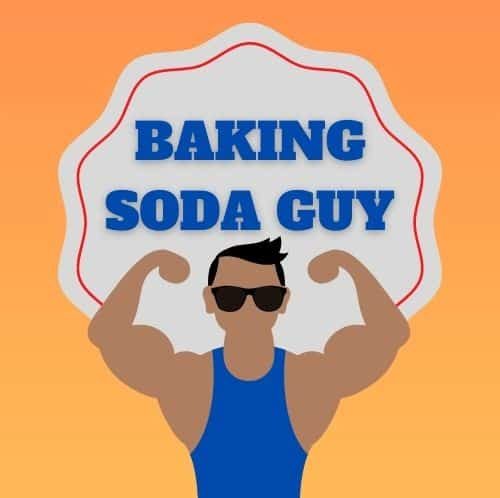Whiteboards are essential in any office, school, or home. They offer a convenient and eco-friendly way to present and organize information, ideas, and plans.
However, one of the most common issues with whiteboards is their tendency to become stained, smudged, and ghosted over time. That’s why keeping them clean is crucial for their longevity and usefulness.
In this article, we will discuss the benefits of making your own whiteboard cleaner and provide you with effective and affordable homemade recipes that will make your whiteboard spotless and like-new again.
Let’s begin.
Why make your own whiteboard cleaner?
When it comes to cleaning products, you have two options: buy them or make them yourself. While store-bought cleaners are convenient, they can be expensive, contain harsh chemicals, and damage the environment.
Homemade cleaners, on the other hand, are affordable, eco-friendly, and give you control over the ingredients you use. Plus, you can customize the recipe to fit your preferences and needs.
Additionally, most of the ingredients used in homemade whiteboard cleaners are readily available and affordable, making them an accessible and cost-effective solution for all.
Ingredients for homemade whiteboard cleaner
Before we dive into the recipes, let’s take a closer look at the ingredients you’ll need to make your own whiteboard cleaner. Here are some of the most common ingredients and their cleaning properties:
- White vinegar: This natural acid is a powerful cleaning agent that can dissolve and remove stains, grime, and grease from your whiteboard. It also disinfects and deodorizes, leaving your board fresh and clean.
- Rubbing alcohol: This solvent is effective in removing ink, marker, and other stubborn stains from your whiteboard. It evaporates quickly, leaving no residue, and restores the shine to your board.
- Baking soda: This mild abrasive is great for removing tough stains and scuffs from your whiteboard without scratching or damaging it. It also neutralizes odors and acts as a gentle cleaning agent.
- Water: This is a crucial ingredient in all whiteboard cleaners as it dilutes the other ingredients and allows them to spread evenly on the board. However, it’s better to use distilled or filtered water to prevent the buildup of minerals and other impurities on your board.
Homemade whiteboard cleaner recipes
Now that you know the ingredients, let’s get into the recipes. Here are three effective and easy-to-make whiteboard cleaner solutions:
White Vinegar Solution:
- Mix 1 part white vinegar and two parts distilled water in a spray bottle.
- Shake well and spray on the whiteboard surface.
- Wipe with a microfiber cloth or paper towel until the board is clean and dry.
Rubbing Alcohol Solution:
- Mix one part rubbing alcohol with two parts distilled water in a spray bottle.
- Shake well and spray on the whiteboard surface.
- Wipe with a microfiber cloth or paper towel until the board is clean and dry.
Baking Soda Paste:
- Mix a tablespoon of baking soda with enough distilled water to form a thick paste.
- Apply the paste to a damp microfiber cloth and rub it on the whiteboard surface in a circular motion. Before using the baking soda paste on your entire whiteboard surface, it’s best to test it on a small area first to ensure that it won’t scratch the surface.
- Wipe the board with a clean, damp cloth to remove the paste, and dry it with a towel.
4 Tips for using a homemade whiteboard cleaner
To get the most out of your homemade whiteboard cleaner, here are some tips to follow:
- Use a microfiber cloth: Microfiber cloths are gentle on your whiteboard surface and effective in trapping dirt and dust, making them the ideal tool for cleaning whiteboards. They also don’t leave lint or streaks, ensuring a spotless finish.
- Avoid excessive moisture: While it’s important to use enough cleaner to remove stains and marks, using too much liquid can damage your whiteboard’s surface and leave it prone to ghosting and staining. Use a light touch and wipe the board with a dry cloth or towel after cleaning to remove any excess moisture.
- Avoid abrasive materials: Abrasive materials such as steel wool, abrasive sponges, or harsh chemicals can scratch or damage your whiteboard surface. Stick to gentle and natural materials such as microfiber cloths and baking soda paste to prevent any harm.
- Store your homemade cleaner properly: To ensure your cleaner remains effective and fresh, store it in a cool, dry place away from sunlight or heat. You can use a spray bottle or a sealed container to keep it handy and prevent evaporation or contamination.
Conclusion:
Keeping your whiteboard clean is essential to maintaining its usefulness. Making your own whiteboard cleaner is a cost-effective and eco-friendly way to keep your board spotless and like-new.
Whether you prefer the power of vinegar, the effectiveness of rubbing alcohol, or the gentleness of baking soda, these homemade recipes will help you clean your whiteboard effectively and safely.
Remember to follow the tips for using your homemade cleaner and enjoy the convenience and savings of making your own cleaning solution.
Do you want to learn more natural cleaning tips? Read DIY Natural Cleaners: 5 Recipes to Try at Home.
Thanks for reading.
-Baking Soda Guy
Image by RAEng_Publications from Pixabay

